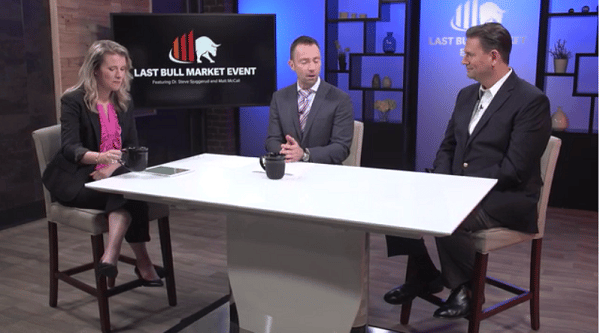By Teeka Tiwari, editor, Palm Beach Daily
In the late 1980s and early 1990s, trying to buy foreign stocks was a nightmare…
You had to open up a foreign account. You had to fund it with foreign money. You had to deal with a foreign broker. And you had to be in your office at 5 a.m. to make the trade.
Plus, the fees were around 7%. That was 35 times the fee to buy a U.S. stock.
So unless you were experienced in foreign equities or a very wealthy investor, it was hard for Americans to buy foreign stocks.
Wall Street saw this as a golden opportunity.
Big brokerage firms created securitized products like exchange-traded funds (ETFs) and mutual funds to make it simpler for investors to buy foreign stocks.
So with these products, you could buy 50 stocks trading in London without having to open an account in the United Kingdom.
In the 1990s, there were a handful of foreign ETFs. Today, there are over 700 with a combined $840 billion in assets under management.
That’s Wall Street’s MO…
It makes it simpler for millions of people to buy financial products… then charges them billions in fees for it.
I’m telling you this story because today, we’re seeing something similar happen in the crypto space.
— RECOMMENDED —
If you missed bitcoin’s 37,473,900% rise… good news. A legendary crypto investor has agreed to share a massive prediction. And why it could soon hand you the biggest investment gain of your life… on a tiny crypto trading for less than a penny today.
Wall Street’s Problem
Wall Street makes its big bucks by spinning up financial products like ETFs and derivatives.
Banks and brokerages can then charge transaction and management fees on these products. They’re the lifeblood of the Wall Street profit machine.
But the fee machine is slowing down.
Instead of piling into expensive managed funds, people are buying cheap passive index funds.
Passive funds simply invest in indexes, so they don’t need an army of expensive analysts. That’s why the fees are lower. Active fees are stuffed full of high-priced analysts… making fees much higher.
Passive funds might charge you 40 cents in fees on every $1,000 invested. By comparison, active funds might charge you as much as $40 per $1,000.
As you can see, the difference is huge.
And with barely one-third of large-cap managers beating their benchmark, it’s no wonder investors are fleeing active funds for better-performing, cheaper passive funds.
— RECOMMENDED —
WARNING!!!
Here’s how to prepare for the biggest stock market event of the decade.
Including the name and ticker of the best-performing stock of 2020.
Wall Street Is Bleeding Money
Over the last decade, Wall Street profits from managed funds and security products have decreased by about 24%.
Altogether, Wall Street saw $458 billion in assets flee into low-cost index funds in 2018. And we estimate it lost as much as $18.3 billion in fee revenue in 2018 as investors left active funds for low-cost funds.
So the point is: Wall Street’s greedy and its fund fees are shrinking like a snowman in summer. Add in the recent decision by major online brokerages to get rid of stock commissions, and you can see Wall Street has a big hole to fill in its income statement.
That’s why Wall Street firms are salivating at the chance to get into the crypto business.
As a brand-new asset class with no defined rules yet, they can charge just about whatever they want for any new crypto-related securities they end up creating.
That’s why established players such as NYSE parent company Intercontinental Exchange (ICE), Nasdaq, TD Ameritrade, and Fidelity Investments are all planning to bring crypto to their clients.
These Wall Street firms are smart. They know the average investor isn’t going to bother with digital wallets and multiple exchanges to buy and store crypto.
So they’ll launch products to “help” investors better navigate the sometimes complex waters of crypto investing.
There are nearly 500 million stock investors in the world compared to 35 million crypto investors. That’s wildly bullish for crypto…
Friends, hear me out when I tell you we’re at the very beginning of the biggest rotation from one asset class (stocks) into a new asset class (crypto) we’ve ever seen in our lifetimes.
Wall Street’s presence will usher in a wave of demand for crypto assets the crypto market has never seen before.
— RECOMMENDED —
How to Capitalize on Crashing Stocks
Learn how to TRADE OPTIONS the right way!
BONUS: Stay until the end of this training and receive
FREE Options Trading Course: Become an Option Pro in 30 Days.
What to Do Next
If you are one of my Palm Beach Confidential subscribers, I have you covered. We’re making moves to position ourselves ahead of this wave of new buying.
If you are not a Palm Beach Confidential subscriber, it’d be unfair to my subscribers to share what we’re doing to prepare.
But what I can tell you is this: Both bitcoin and Ethereum – the world’s two largest cryptos – will be significantly higher than they are today.
At the time of this writing, bitcoin is trading above $7,000 and Ethereum is trading around $150. The entire crypto market is down on fears that China’s cracking down on crypto.
Friends, China has been cracking down on crypto since bitcoin was below $100. And it’s still thrived.
Ignore the nonsense news. And if appropriate for you, buy a small stake of bitcoin and Ethereum. A year from now, you’ll be glad you did.


